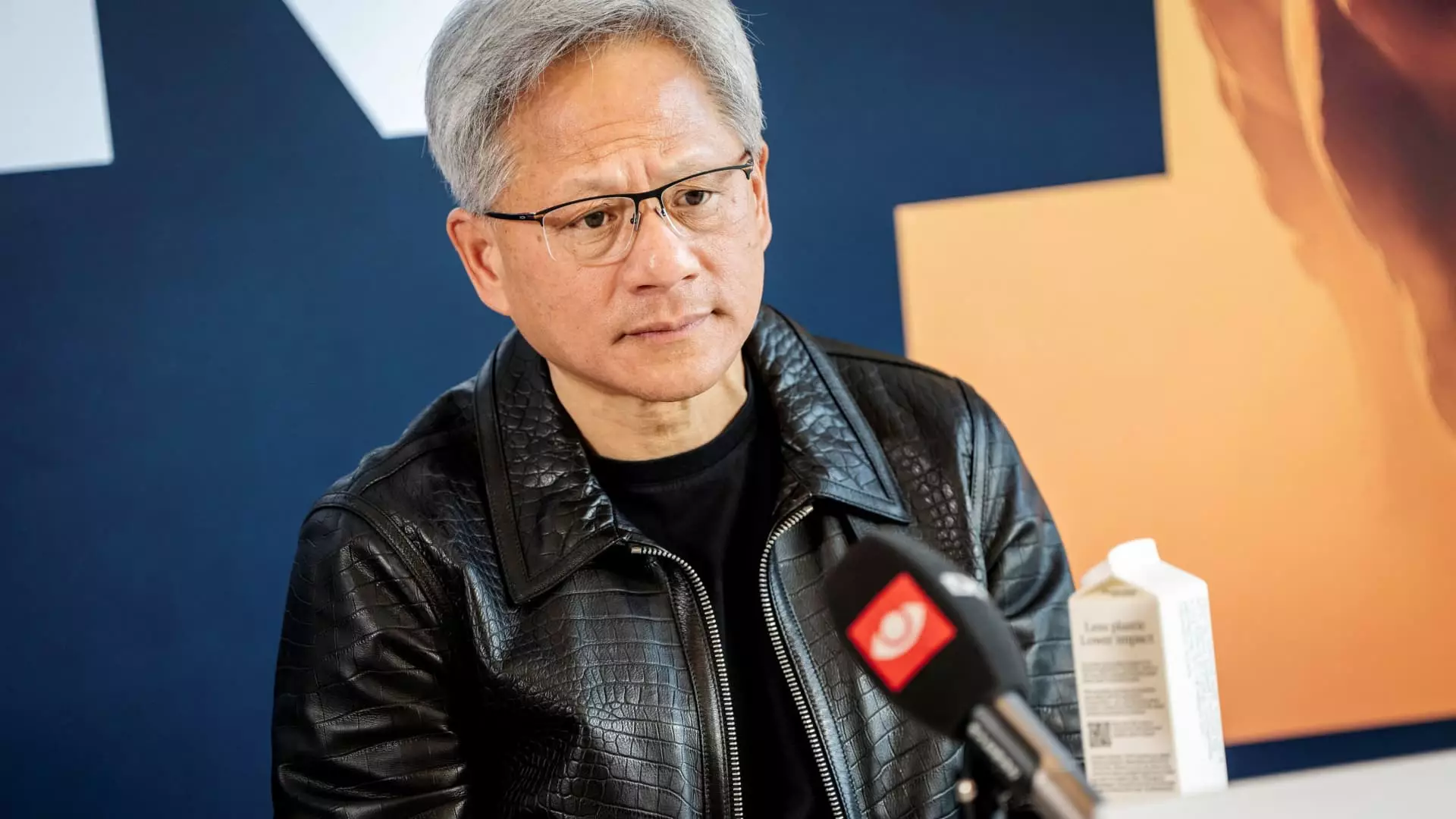Nvidia’s unmistakable prominence in the ever-expanding artificial intelligence (AI) chip market is a testament to its ability to innovate and stay ahead of competitors. With a staggering 80% market share, Nvidia has carved out a space for itself as the go-to supplier for graphics processing units (GPUs), which are crucial for developing and deploying generative AI applications. As the tech community eagerly anticipates Nvidia’s third-quarter earnings report, the key question remains: can the company sustain this meteoric growth amid intensifying competition in the AI sector?
Analysts are intrigued by Nvidia’s position, particularly as it navigates a market with an estimated value of $3.5 trillion. HSBC analyst Frank Lee succinctly summarizes the scenario, pointing out that this phase may open “uncharted territory” for Nvidia, which not only needs to maintain its momentum but also adapt to an evolving landscape. While competition is heating up, Lee and others remain optimistic about Nvidia’s potential, especially in relation to its growth trajectory through its next-generation Blackwell chip platform.
The launch of the Blackwell chip represents a crucial pivot for Nvidia, shifting focus towards its latest technological advancements. As the company ventures deeper into this new phase, the demand for Blackwell chips from major players like Microsoft, Google, and OpenAI will be critical to maintaining Nvidia’s growth narrative. However, concerns have surfaced regarding some of the Blackwell systems developing overheating issues, raising questions about the product’s immediate viability in a market where performance is paramount.
Investors eagerly await insights from Nvidia’s CEO, Jensen Huang, on the demand curve for Blackwell chips and any potential remediation efforts regarding the overheating challenges. Market expectations suggest that Nvidia anticipates significant sales in the upcoming quarter, with projections indicating around $1 billion in revenue from Blackwell, which demonstrates the confidence analysts have in the product despite recent concerns.
Despite facing scrutiny regarding its product line—especially after an eightfold increase in stock value since the launch of ChatGPT—Nvidia has continued to manifest impressive sales growth. In its most recent fiscal report, Nvidia revealed a remarkable 122% increase in sales, albeit lower than the explosive growth rates of the previous quarters, which exceeded 260%. This recent deceleration prompts reflections on whether a plateauing trend will soon emerge in Nvidia’s revenue, albeit from a significantly larger base compared to previous years.
Analysts forecast around $33.12 billion in revenue for the upcoming quarter, reflecting a compelling 83% annual growth. Meanwhile, the consensus expectation for earnings per share is set at 75 cents. While growth rates may appear to be decelerating, Nvidia’s data center sector continues to dominate, comprising nearly 88% of total sales.
Interestingly, the gaming sector—previously a staple for Nvidia—has seen a shift in focus as data center sales soar. The workforce is transitioning, with Nvidia playing a pivotal role in the gaming industry by supplying chips for platforms like Nintendo’s Switch, which is experiencing sales decline due to its age. Projections concerning the gaming business suggest a modest growth of about 6% to $3.03 billion, a fraction of the rapid expansion occurring within the data center domain.
Nvidia’s automotive segment, though still a small player in comparison, is showing promise with expected sales growth of 38% to $360 million. However, this growth is not the primary concern for investors right now; the focus is decidedly on the vigorous expansion trajectory of Nvidia’s data center business.
As Nvidia approaches its earnings report, the prevailing sentiment encompasses a blend of optimism and cautious watchfulness. What lies ahead for the tech giant hinges not only on the Blackwell chip’s market reception but also on its steady commitment to innovation in the face of mounting competition. Nvidia’s journey is an intricate dance of navigating market challenges while adapting to new technology demands, and the outcomes of this balancing act will determine whether it can sustain its status as an industry leader in AI chips. The expectations from investors remain high, and with them, Nvidia’s stakes as it forges into the future.


Leave a Reply
You must be logged in to post a comment.